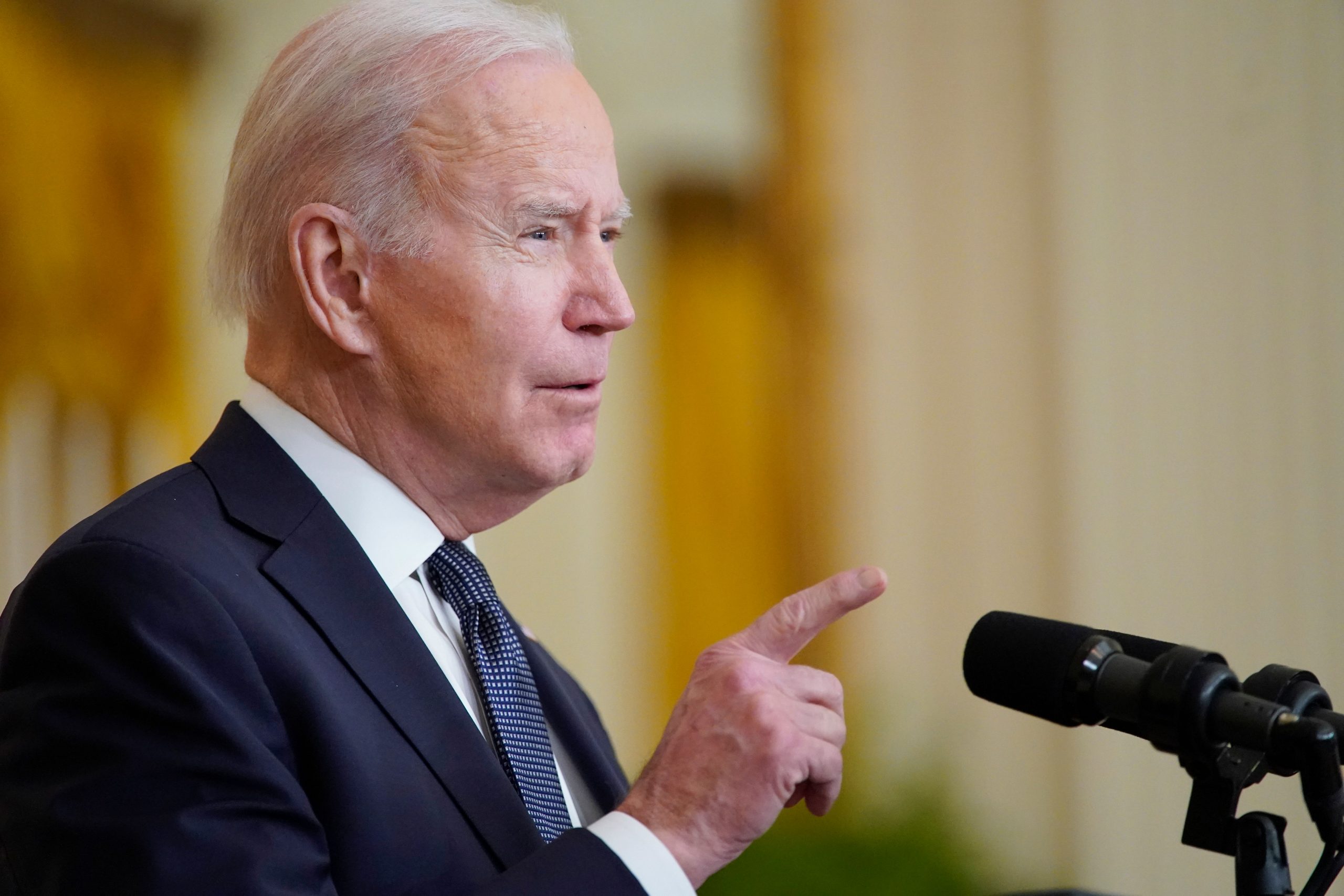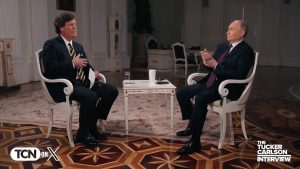As his military reported pulling down some of its troops near Ukraine, Russian President Vladimir Putin said Tuesday that he welcomed a security conversation with the West. However, US President Joe Biden stated that the US had not independently validated Russia’s allegation and that an invasion was still possible.
Also read: Russian cyberattack on government websites, banks, alleges Ukraine
As he pursues his demand for the West to suspend Ukraine’s bid to join NATO, Putin stated that he does not desire conflict and will rely on dialogue. At the same time, Putin refused to commit to a complete troop withdrawal, stating that Russia’s next steps in the standoff will be determined by how the situation develops.
In remarks at the White House, Biden promised that the U.S. would continue to give diplomacy “every chance” to prevent a Russian invasion, but he struck a skeptical tone about Moscow’s intentions. Biden also insisted that the U.S. and its allies would not to “sacrifice basic principles” respecting Ukraine sovereignty.
Also read: WHO warns of fresh COVID-19 wave in east Europe, including Russia, Ukraine
“Two paths are still open,” Biden said. “But let there be no doubt: If Russia commits this breach by invading Ukraine, responsible nations around the world will not hesitate to respond. If we do not stand for freedom where it is at risk today, we’ll surely pay a steeper price tomorrow.”
Putin’s gestures calmed global markets, which had been jittery due to the highest level of East-West hostilities in decades. The United States and its European allies remained hesitant, saying they needed to see signs of a Russian retreat. According to Biden, 150,000 Russian troops are now stationed near Ukraine, up from a previous US estimate of 130,000 troops.
Also read: Russia ready to talk with US, NATO for transparency, says Vladimir Putin
While sending soldiers and military equipment to NATO countries in Eastern Europe, the US and NATO continue to warn that Russia may invade at any time. Russia has vehemently rejected any such ambitions. It wants the West to keep Ukraine and other former Soviet republics out of the alliance, stop weapon deployments near Russian borders, and withdraw troops from Eastern Europe.
The US and its allies have flatly rejected those demands, but have offered to meet with Russia to discuss ways to strengthen European security.
Putin claimed the West agreed to examine a ban on missile deployment to Europe, curbs on military manoeuvres, and other confidence-building measures after meeting with German Chancellor Olaf Scholz. These are problems that Moscow has raised for years.
Also read: NATO says ‘no sign’ of de-escalation in Ukraine, asks Russia to do better
He said Russia is open to discuss “some of those elements,” but added that it would only do so in combination “with the main issues that are of primary importance for us.”
Asked if there could be a war in Europe, Putin said Russia doesn’t want it but that Ukraine’s bid to join NATO posed a major security threat to his country.
While Scholz reiterated that NATO’s eastward expansion “is not on the agenda — everyone knows that very well,” Putin retorted that Moscow will not be assuaged by such assurances.
“They are telling us it won’t happen tomorrow,” Putin said. “Well, when will it happen? The day after tomorrow? What does it change for us in the historic perspective? Nothing.”
Putin went on to argue NATO expansion violates the principle of the indivisibility of security enshrined in international documents.
“We want to solve this issue now as part of negotiation process through peaceful means,” Putin said. “We very much hope that our partners hear our concerns and take them seriously.”
Scholz also said diplomatic options are “far from exhausted,” and praised the announcement of a troop withdrawal as a “good signal,” adding: “We hope that more will follow.”
Also read: US accuses financial website of spreading Russian propaganda
The Russian Defense Ministry released images of tanks and howitzers rolling onto railway platforms and more tanks rolling across snowy fields. It did not disclose where or when the images were taken, or where the vehicles were headed, other than “to places of permanent deployment.”
Biden acknowledged the likelihood that U.S. and allied sanctions on Russia in retaliation for an invasion of Ukraine would have significant blowback on the American economy, including possible price hikes and disruption to the nation’s energy supply.
“The American people understand that defending democracy and liberty is never without cost,” Biden said. “I will not pretend this will be painless.”
He said the administration was trying to preempt supply issues by working with energy producers and shippers on contingency plans, and said he would work with Congress on unspecified “additional measures to protect consumers and address the impact of prices at the pump.”
Russian military continue to threaten Ukraine along its eastern border and from the Crimean peninsula in the Black Sea, which Moscow annexed from Ukraine in 2014, the same year it backed a separatist uprising in the country’s east. More Russian troops are stationed in Belarus, where they are participating in sweeping joint drills, looming over Ukraine.
Russia’s statements of a pullout have been met with mistrust by Ukraine.
“We won’t believe when we hear, we’ll believe when we see. When we see troops pulling out, we’ll believe in de-escalation,” Ukrainian Foreign Minister Dmytro Kuleba said.
NATO Secretary-General Jens Stoltenberg said that “so far, we have not seen … any signs of reduced Russian military presence on the borders of Ukraine,” adding that the alliance wants to see a “significant and enduring withdrawal of forces, troops, and not least the heavy equipment.”
British Foreign Secretary Liz Truss reiterated the invasion danger still exists. Norwegian Foreign Minister Anniken Huitfeldt issued a similar warning, and Estonia’s foreign intelligence agency said the Russian armed forces could launch an operation “from the second half of February.”
Few Russians expect a war, following the Kremlin’s dismissal of Western warnings as “hysteria” and “absurdity.”
In a village in Russia’s Belgorod region about 30 kilometers (18 miles) from Ukraine’s border, residents carried on with life as usual, even as more military personnel have been passing through village streets.
“We are friends with Ukraine,” said villager Lyudmila Nechvolod. “We are really on the border, we really have relatives here and there, everyone has somebody there (on the Ukrainian side). No one wants war.”
Tuesday’s diplomatic efforts continued.
According to a State Department official who spoke on the condition of anonymity because the call had not been formally revealed, US Secretary of State Antony Blinken spoke with Lavrov. On Tuesday, Biden spoke with French President Emmanuel Macron about the problem.
After several tense weeks that left Europeans feeling trapped between Moscow and Washington, and further pushed up household energy bills due to a dependence on Russian gas, European leaders have hurried to avert a new conflict on the continent.
Meanwhile, Russian legislators have asked Putin to recognise the separatist-held territories of eastern Ukraine as separate republics. The State Duma, Russia’s lower chamber, voted to make such a request to Putin.
Putin stated that the move indicates Russian public compassion for those stuck in the fighting in eastern Ukraine, which has claimed the lives of nearly 14,000 people since 2014. He did say, though, that Russia still believes the 2015 peace pact signed by France and Germany should be the primary vehicle for resolving the separatist dispute.
Putin’s statement indicated that he was not inclined to support a move in parliament that would effectively nullify the 2015 deal, which marked a huge diplomatic triumph for Moscow by pressing Kyiv to provide the separatist territory substantial self-rule. Many in Ukraine are opposed to it, and its implementation has stopped.







